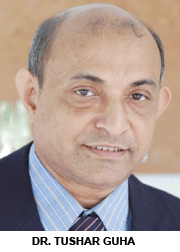 In India, the formal education system as it exists today, was established during British rule (1757-1947). Standardised school education — pre-primary, primary and secondary — structured by Lord Macaulay, came into existence during this period and over the past two centuries, formal, British-style school and higher education has become the norm, certainly in urban India. This system posits that every child should know the basics of the normative curriculum comprising the sciences, languages and social sciences, as also art and crafts.
In India, the formal education system as it exists today, was established during British rule (1757-1947). Standardised school education — pre-primary, primary and secondary — structured by Lord Macaulay, came into existence during this period and over the past two centuries, formal, British-style school and higher education has become the norm, certainly in urban India. This system posits that every child should know the basics of the normative curriculum comprising the sciences, languages and social sciences, as also art and crafts.
Somewhere down the line after independence, the country’s education system started becoming ineffective. Today the system has been reduced to dispensing degrees and certificates to students who follow the rote-learning method, with the syllabuses of most examination boards leaving no room for any inspired or enthusiastic study patterns to be followed by students. Qualified and dedicated teachers are hard to find. However elite private schools still manage to attract competent staff and therefore, we are back to the ancient times when only the elite could afford good quality education.
Nevertheless even in the country’s best schools, children are growing up to become academically learned, but ill-equipped to implement know-ledge. In the quest for acade-mic brilliance, natural skills and abilities and holistic development of children have become casualties. Regret-tably, today’s children need to be taught to become imaginative, once the prero-gative of every child!
Changing times, evolving technologies and jet travel which have shortened inter-national boundaries, have impacted society. Children in particular have taken to new digital and information communication technologies in a big way. Therefore they deserve a much better environment to grow intellectually into balanced personalities, with sound value systems.
With multi-tasking becoming the key to workplace efficiency and effectiveness, children should be encouraged to perform a variety of tasks in stress-free environments. Learning by rote has to give way to learning for knowledge through research and supplementary reading. The primacy of examinations needs to be downgraded in favour of continuous testing and evaluation to assess the real learning and comprehension — rather than memorisation skills — of students. Moreover with the guidance of parents and teachers, children should be given the choice to select subjects and study programmes which interest them.
Against this backdrop, the choice of co-curricular and extra-curricular activities in the formative years becomes very important. Schools should integrate as many activities as they can, aside from regular study subjects and programmes, into their time tables. Children’s aptitudes can be ascertained fairly early, and accordingly their other intelligences like sports, dramatics, fine arts etc need to be institutionally and parentally encouraged.
In this day and age, it’s also vitally important to teach life skills to children. With both parents usually working full-time and joint families phasing out, today’s children and youth are deprived of the traditional knowledge and invaluable wisdom of family elders whose life experiences were treasure chests of cultural education. This makes it incumbent upon schools and teachers to inculcate ethics and value systems — rather than mere academic knowledge in their students. Teachers need to upgrade and update their knowledge from time to time to meet the demands of learners. It is also imperative that life skills are imparted with enthusiasm, shunning monotonous routine teaching.
Non-formal or informal pedagogies which are the current flavour, are related to enjoyable teaching-learning. It is essentially about understanding the receptive capability and potential of each student, and as such, it requires initiative, innovation and interactivity — the three I’s.
Implementing the three I’s in the classroom can deeply impact students. It enables them to be appreciated and respected with each student’s logic and intelligence allowed to bloom. This in turn leads to improved self-confidence, the ability to question, and independent thinking.
For instance, all teachers need to appreciate that
• Drama develops both verbal and non-verbal communication
• Dance teaches rhythm, physical agility, and develops aesthetics
• Singing teaches voice culture and the art of listening
• Athletics and sports encourage fitness, competitive spirit and physical development
• Art and crafts education teaches aesthetics and patience
Commonly, all of the above extra or co-curricular activities infuse discipline, imagination and even develop spirituality in children.
Non-formal teaching skills — the ability to integrate and stimulate the multiple intelligences latent within all students to enable them to acquire a life-study balance — is the duty of all 21st century teachers. We need to grow commensurately with our students.
(Dr. Tushar Guha is the Mumbai-based founder-director of Nrityanjali Group)